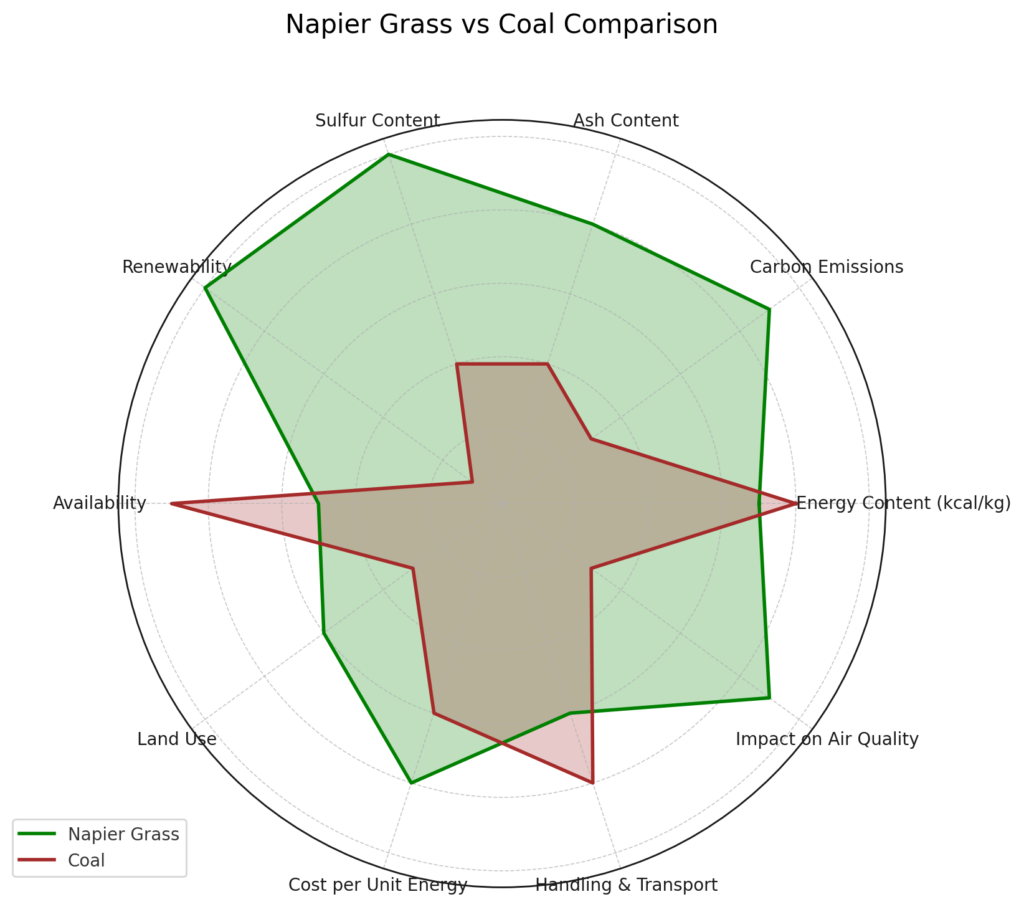
Napier Grass and Coal for use as energy sources, focusing on various factors like energy content, environmental impact, cost, and availability. I will also include a chart for visual reference.

Comparison Table
| Factor | Napier Grass | Coal |
| Energy Content | 3,500-5,000* kcal/kg | 5,000-6,500 kcal/kg |
| Carbon Emissions | Low (considered carbon-neutral) | High (significant CO2 emissions) |
| Ash Content | Low (1-5%) | High (20-40%) |
| Sulfur Content | Negligible | High (up to 2-3%) |
| Renewability | Renewable (can be harvested multiple times/year) | Non-renewable |
| Availability | Depends on cultivation | Widely available but limited in reserves |
| Land Use | Requires agricultural land | Mining land, with significant environmental impact |
| Cost per Unit Energy | Generally lower | Generally higher but more stable |
| Handling & Transport | Requires processing (e.g., drying, pelleting) | Easier to transport but more expensive |
| Impact on Air Quality | Minimal | Significant pollution (SOx, NOx, particulate matter) |
Key Points:

Chart: Napier Grass vs Coal
I’ll create a chart summarizing this comparison.

Here’s a radar chart comparing Napier Grass and Coal across various factors. The chart visually represents how Napier Grass and Coal differ in terms of energy content, environmental impact, cost, and more.
Napier Grass generally scores higher in environmental sustainability, renewability, and lower emissions, while Coal has a slight edge in energy content and availability but scores lower in eco-friendliness.